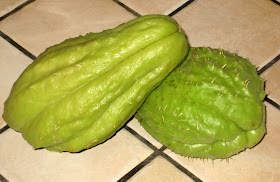We are not exactly a beet-loving household. We tolerate them from afar -- in Spain, for example, they sometimes place a beet on an otherwise perfectly acceptable veggie sandwich, and we are fine with that (as long as we are not actually in Spain). But up close -- in the same country, for instance -- they become decidedly more troubling. Let's put it this way: there are only three things in the world that my husband won't eat, and the beet is one of them.
But we knew they were coming. It's that time of year. So when they showed up in our CSA box this week, we did not jump, or scream. We calmly extracted them from the box, turned, and stuffed them safely in the back of the vegetable drawer, buried under a heap of parsley, carrots, radishes, and about six other things we managed to cram in on top of them. We returned to our lives, and did not think about beets. Or rather, we thought about not thinking about beets. We tried not to think about not thinking about beets. We thought about beets.
We could, we reasoned, try the beets. A little, tiny, modicum of beets. A beetlette. We could try a beetlette, mixed in with other things, and see if maybe it wouldn't be quite so beety. And a fellow beetophobe had suggested trying them raw, rather than cooked, which would make them less beety as well. We could try a raw, practically infinitesimal, highly camouflaged bit of a beet, and see. Yes. We would do that. We would do that, and see, and then we could never ever ever eat beets ever again.
Except that after all that, we kind of liked them.
Ingredients
Baby greens
Olive oil
Salt and freshly ground black pepper
Sherry vinegar
2-3 lemon cucumbers, peeled, quartered, and sliced
1 cup cooked chickpeas
2 radishes, halved, sliced, then turned crosswise and sliced into thin strips
1 beet, peeled and grated
1-3 carrots, peeled and grated
2 medium- or hard-boiled pastured eggs, quartered
Whisk together a generous dousing of olive oil with about a third as much vinegar to form an emulsion, and add a pinch of salt and black pepper to taste. Toss the greens with enough of the vinaigrette to lightly coat them (you'll also want a little more vinaigrette to drizzle over the salad, so save a bit or make more if necessary).
Arrange a heaping bed of greens on each plate, then layer on the cucumbers, radishes, and chickpeas. Sprinkle liberally with the grated beets and carrots, and drizzle a couple more spoonfuls of vinaigrette over the top. Add the egg on top or on the side, sprinkle with salt and pepper to taste, and serve.
Serves 2 hungry beetophobes as the main part of a meal, or more as a side salad.
 Ingredients
Ingredients

















































